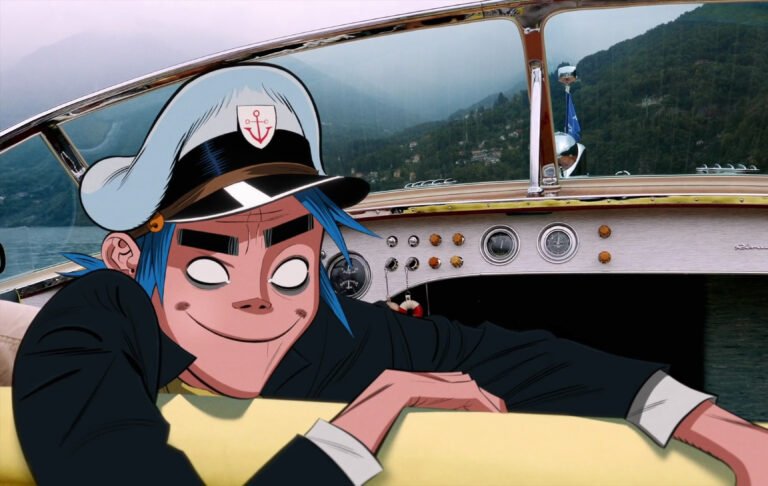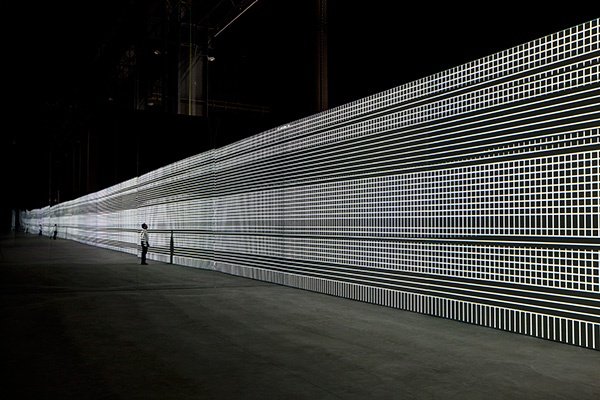I stepped through the doors mostly because they were open.
Because outside, the city felt too aimless, and home was too quiet. Because I had nowhere else to be, and at least here, I could pretend I had a reason.
The air inside was over-conditioned and smelled faintly of dust and something chemical, like varnish or the ghost of cleaning fluid. The floor was a cold, pale stone that swallowed the sound of footsteps, leaving only the hush of cloth shifting, and the occasional throat-clearing. Overhead lights hummed, their fluorescence bending shadows in unnatural ways.
I came upon a canvas that was mostly black, with a few slashes of aggressive yellow, and a title plaque that read: “Divided Interior #6.” The painting looked like something fractured and burning in slow motion. I could hear the flames as my mind drifted, but I saw nothing.
There was an old man next to me, staring. Just staring. The kind of staring that implies being inside something rather than just looking at it.
“What do you think?” he asked, which was a real conversational bear trap, because I had only two choices: admit I felt nothing, or invent something I did not feel.
“I think it’s—,” I started, but even that was false. Thinking wasn’t happening…at all. If anything, I was waiting. For a feeling. Or maybe an explanation that would allow me to have a feeling. Something digestible, a crisp little sentence, a lifeboat of interpretation that could float me to the right expression.
“It’s like being inside a thought you haven’t had yet,” he said, which I later recognized as an invitation rather than an assertion.
I nodded and made the noise people make when they want to sound like they’re absorbing something meaningful.
For weeks afterward, I kept returning to that phrase—”inside a thought you haven’t had yet”—rolling it in my mind like a stone in my palm, smooth at first, then increasingly jagged as meaning took hold. At first, it was a throwaway metaphor, some museum-goer’s poetic indulgence they overheard once.
But then, I began to wonder—how many thoughts were just waiting in me, thoughts that had not yet formed, only waiting for the right conditions? What could they bring me? The right light, the right slant of black against yellow, the right morning where I had slept just enough but not too much?
At odd moments—while tying my shoe, waiting for water to boil, stepping into an elevator—I’d recall the weight of the black, how it sank into itself, swallowing space. But then I’d think of the yellow—thin, reaching, almost defiant—and I wondered if it was trying to escape or if it was only there to emphasize the black’s pull. What was the artist trying to show?
A thought would nearly take shape, then vanish like breath on glass. The closer I got, the less I understood. Understanding itself recoiled, slipping away the moment I reached for it.
Weeks passed like a long unresolved chord. One night, sleepless and staring at my bedroom ceiling, I traced the fine, uneven ridges of the plaster with my eyes, the way they caught shadows in the dim light, forming topographies of valleys and plateaus that had never meant anything to me before. I followed them as if they were pathways in a place I had always known but never mapped. Landscapes unconquered by tiny armies, untouched by fauna. I imagined I could shrink, step into those fissures, follow the cracks down into something hidden just beneath the surface. The longer I looked, the less I felt like I was in my room at all.
The air got heavy, and the sound turned low, like I slipped underwater. Maybe there was something there I had failed to see. Maybe the ceiling had always been a mirror for some deeper, unseen architecture in my mind, an unexamined surface stretched over thoughts I had never quite accessed. Maybe my eyelids don’t fall in perfect lockstep. Maybe one foot always sits a little heavier on the floor. Maybe my heart could beat and beat and bounce and bounce right up into my throat and out through my teeth.
And then, as if the thought had been waiting for me to arrive at it—there was no black and no yellow, no void or escape. They were the same thing at different moments. Had I spent my life mistaking distance for perspective, assuming I was looking at the world when, in reality, I had only ever been inside my own unfinished thoughts, circling meanings that were never really there?
At some point, my body must have moved before my mind caught up. Or maybe I was already there, had never left, the walls of my apartment only a temporary hallucination. I found myself standing outside the museum in the cold hush of dawn, the city still damp with sleep. The streets were empty in that way that made them feel like a set, like something waiting to be inhabited rather than something alive. My breath hovered in the air before dissolving. I wasn’t sure how long I had been standing there, only that I had been drawn here before the doors had even opened, like some current had been pulling at my ribs, my organs and guts.
And then, the doors unlocked. I stepped inside. The painting was in front of me as though it had been waiting. The black was more than absence—it was swallowing, absorbing, something that demanded space instead of giving it. The yellow screamed at the edges, grasping, burning, or maybe trying to escape. I stood there, caught in the tension, waiting for something in me to snap. The painting’s gaze now fixed on me, I stared back, waiting for it to blink first, mistaking my own inability to name what I felt for the painting’s refusal to offer it.
Still.
Breathless.
The low roar of blood in my thawing ears.
And there was an inexplicable ache in me, sudden and raw, like the moment you find an old voicemail from someone you loved and listen, expecting nostalgia, but instead hear something else—the hesitation in their voice, the pause before saying your name, the coded message of a departure that had already begun before you ever noticed. The person they were. Not the person you made up. And you realize you still have to wake up the next day and the day after that and be the same person you always were, living with it, with yourself.
And I wanted to explain it, this feeling. Find its answer. Shape it into a thing with corners and borders and containment. But I couldn’t. Because that would mean stepping outside of it. And if I stepped outside of it, what if there was nothing else there? What if the ache was the only proof that anything had ever mattered, and letting it go meant losing even that? Or maybe, just maybe, it wasn’t proof of loss at all, but proof that something had lived, that you were more than just stardust—real or not, remembered or imagined, whatever it was, it was mine, and in some way, I was still inside it.
Now, I come back week after week. Old, thin skin hangs from my eyes, the man I still am, and the man I’ve become.
I stare. Just stare.
Is it about reaching for an ever more correct explanation? Or is it about making the feeling last?
Is clinging to a fiction better than standing in the cold air of what is actually real?
That’s the thing about art. It only opens the door.




